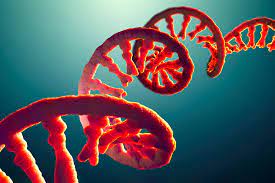
Breaking News
 BREAKING: Secret Study Conducted By Henry Ford Health Conclusively Proves...
BREAKING: Secret Study Conducted By Henry Ford Health Conclusively Proves...
Discovering Gems of Understanding
 Trump's Corporate Favor Factory
Trump's Corporate Favor Factory
 Google Quantum Supremacy And Artificial Intelligence
Google Quantum Supremacy And Artificial Intelligence
Top Tech News
 Graphene Dream Becomes a Reality as Miracle Material Enters Production for Better Chips, Batteries
Graphene Dream Becomes a Reality as Miracle Material Enters Production for Better Chips, Batteries
 Virtual Fencing May Allow Thousands More Cattle to Be Ranched on Land Rather Than in Barns
Virtual Fencing May Allow Thousands More Cattle to Be Ranched on Land Rather Than in Barns
 Prominent Personalities Sign Letter Seeking Ban On 'Development Of Superintelligence'
Prominent Personalities Sign Letter Seeking Ban On 'Development Of Superintelligence'
 Why 'Mirror Life' Is Causing Some Genetic Scientists To Freak Out
Why 'Mirror Life' Is Causing Some Genetic Scientists To Freak Out
 Retina e-paper promises screens 'visually indistinguishable from reality'
Retina e-paper promises screens 'visually indistinguishable from reality'
 Scientists baffled as interstellar visitor appears to reverse thrust before vanishing behind the sun
Scientists baffled as interstellar visitor appears to reverse thrust before vanishing behind the sun
 Future of Satellite of Direct to Cellphone
Future of Satellite of Direct to Cellphone
 Amazon goes nuclear with new modular reactor plant
Amazon goes nuclear with new modular reactor plant
 China Is Making 800-Mile EV Batteries. Here's Why America Can't Have Them
China Is Making 800-Mile EV Batteries. Here's Why America Can't Have Them
Self-Amplifying RNA Shots Are Coming: The Untold Danger

Authored by Klaus Steger via The Epoch Times (emphasis ours),
The next generation of RNA-based injections will contain self-amplifying RNA (saRNA). If the term "self-amplifying RNA" sounds frightening, it should. It likely brings to mind images of scientific experiments run amok.
As discussed in a previous article, "mRNA vaccines" are not made with messenger RNA but with modified RNA (modRNA). These so-called vaccines are actually gene therapy products (GTPs), as modRNA hijacks our cells' software. We have no possibility at all to gain influence on modRNA (or saRNA) after it has been injected.
What Distinguishes saRNA From modRNA?
The term "self-amplifying" is self-explanatory: saRNA replicates itself repeatedly, which is not natural, as natural mRNA is always (without exception) transcribed from DNA (this is called the "central dogma of molecular biology").
Compared to modRNA, a small amount of saRNA results in an increased amount of produced antigen; one shot of saRNA-based injection may be enough to generate sufficient antibodies against a virus.

 China Innovates: Transforming Sand into Paper
China Innovates: Transforming Sand into Paper

